We all want to live a long and healthy life, right? The problem is that getting older often means becoming more frail and chronically ill—and none of us want that! Well, good news! Right here, we’ll be exploring the latest science about how we may be able to extend not just our life, but our healthy years of life.
This book Lifespan is split into 3 parts:
- Part 1 explains the biology of aging. Sinclair tells the story of how our scientific understanding of aging has evolved over the last few decades. His current theory is that aging is really a loss of information in our epigenome. (Don’t worry, we’ll explain what that means later.) That is good news because it means we may be able to slow and—who knows—maybe eventually stop aging altogether.
- Part 2 talks about current research and treatments. Today, scientists are studying many pathways for extending lifespan and there are many exciting results to share, but there is also still much they don’t know. Sinclair says our ‘longevity genes’ are activated through practices like calorie restriction, fasting, exercise and cold exposure… and promising medicines are being studied that could become future anti-aging treatments.
- Part 3 talks about future implications of living longer. Here Sinclair imagines what a future with lots of 120-year-olds will look like. Greater longevity will affect every part of our world, from population growth to career planning to social security programs.
In these notes and commentaries on the book Lifespan, we’ll be focusing more on the practical side of David Sinclair’s ideas, less on the scientific theory and moral discussion. We will look at those important ideas briefly, but the emphasis will be on how we can apply the science to our daily lives.
As I write this, my own grandma is 95 years old! For her age, she appears energetic and healthy, without any major chronic diseases. While reading this book, I couldn’t help but remember some of the ‘traditional wisdom’ she shared with me growing up. She was always telling us to eat more vegetables and to avoid processed meats and sugar. All I can say is that if I make it to 95, I can only hope to look as vital as she does! Perhaps this book can point me (and you) in the right direction to make that happen.
About the Authors
David Sinclair (Harvard.edu) is a professor of genetics and co-Director of the Paul F. Glenn Center for the Biology of Aging Research at Harvard Medical School. He was born in Australia, where he completed his studies at the University of New South Wales. In 1993, he worked under Leonard P. Guarante at MIT to study aging in yeast, and in 1999 he moved to Harvard where he helped establish the Aging Research Lab, which has now published over 170 papers.
Matthew LaPlante is the co-writer. He is a professor of journalism at Utah State University.
💊 1. Aging Will Be Treatable: Getting older is not inevitable, but a disease that affects us all
If there is one single message that David Sinclair wants to communicate in this book, it is this: “Aging is a disease.” (NIH.gov) In other words, he believes that as we understand the biology of aging better, we will be able to slow it down… or even avoid it altogether one day. His late grandmother, growing older and losing vitality, often said “it’s just the way it goes,” but Sinclair believes that we can extend our healthy years far beyond our current imagination.
To people who are less optimistic than him, to the skeptics, he says the science of aging is like human flight. For thousands of years almost everyone believed it was impossible, then some people figured it out. And today we take it for granted that huge metal containers full of hundreds of people take off from every major city in the world, with extremely rare accidents.
Defining aging as a disease is also important because, in our modern medical system, it is diseases that get funding. And without funding, the long-term research needed to understand aging and increase our longevity will not happen. In this respect, a major step forward will happen on January 1, 2022, when the World Health Organization’s 11th guide for classifying diseases (ICD-11) will go into effect. That guide includes a new disease code for “old age,” meaning for the first time aging itself can be diagnosed and treated.
Personally, I did have some knee-jerk reactions of doubt as I was reading parts of this book. It is hard not to, as Sinclair’s descriptions of the future sound so much different than the world that we are living in today. It just feels hard to believe that living until 120 years old could become normal and expected within my lifetime! Yet I no longer believe that it is impossible.
Sinclair presents a convincing argument that the science of aging is at an inflection point. In the last 20 years scientists have learned a lot about the mechanisms behind aging, and it is entirely possible that big breakthroughs will happen in the next decades. After all, only 66 years passed from the day in 1903 when the Wright Brothers’ first homemade plane took flight, until humans were landing Apollo 11 on the moon.
Today we see aging as an unavoidable part of life, but Sinclair firmly believes that aging is a disease that will eventually be treatable. In 2022, WHO guidelines will make “old age” an official diagnosis, which will make it easier for scientists to receive funding for critical research into aging.
🧬 2. Aging is Information Loss: The ONE biological cause of aging
Since the 1950’s, many theories of aging guessed that our DNA was being damaged, either by our body’s mistakes, outside radiation or oxidation. However, the breakthrough of cloning proved that aging was not DNA damage, because DNA from an old animal could be used to make a young animal without problems.
Over the last 20 years, scientists have made many important discoveries that help us better understand how we age at the molecular level. Now pay attention and put on your seatbelt! In the next few paragraphs, I’m going to summarize David Sinclair’s chapters about the current science of aging at super-speed. (And if you don’t totally understand this next section, then don’t worry—we’ll get to the more practical information in just a few minutes.)
- Aging is really a loss of information in our epigenome. The epigenome surrounds our DNA, it includes the systems that help transform our DNA code into proteins. Our epigenome is very important because it directs how our DNA is expressed, almost like it can turn certain parts of our genes on or off.
- Our DNA is not just floating around in our cells, it is wrapped in coils around proteins called histones, and this is a critical part of our epigenome. When we’re young, these coils are wrapped tightly. But as we age they tend to unravel, causing our cells to lose some of their information and function less effectively. Sinclair compares it to a DVD becoming scratched up. It’s like the cell becomes a little confused about whether it is a skin or hair or blood cell. (By the way, the coils are technically called ERCs—extrachromosomal rDNA circles.)
- Sirtuins (Wiki) are proteins that keep the coils tight. Many scientists believe sirtuins regulate aging and even call them “longevity genes.” A simple single-celled organism like yeast has one sirtuin called SIR2, while mammals and humans have seven sirtuins in almost all our cells, from SIRT1 to SIRT7.
- Sirtuins have two modes:
- 1. Reproduction. When life is good, sirtuins allow the cell to reproduce.
- 2. Repair. When damage or environmental stress happens, the sirtuins leave while broken DNA is being repaired. (Our DNA is constantly being broken as a result of being alive, but this process can be made worse by smoking, certain chemicals, and radiation from UV light, x-rays and more.) Scientists believe this response evolved as a ‘survival circuit’ in all living organisms, because when times are tough our body needs to focus on hunkering down and repairing itself, not reproduction/growth.
After sirtuins leave during DNA repair, some of them get lost coming back home, which means we end up with fewer sirtuins keeping our ERC coils wrapped tightly. Over the years, as our sirtuin levels go down, and this is why the coils lose their youthful shape. Losing the shape essentially means our cells have lost important information about how they are supposed to function, and that results in aging.
- What proof is there for all this?
- In one breakthrough experiment, Sinclair’s lab found that mice whose DNA was continuously broken by a special enzyme aged 50% faster than regular mice.
- Other researchers also found mice engineered to lack the SIRT6 gene aged faster than normal.
- On the other hand, when additional sirtuin genes were given to mice (SIRT1 and SIRT6), then they lived longer and healthier lives.
- Sirtuins require a molecule called NAD to function, so when mice were given a NAD precursor to boost their sirtuin activity, they became healthier and lived longer. In one experiment, elderly mice became the equivalent of marathon runners, breaking the limits of the mouse threadmill in Sinclair’s lab.
However, in what almost sounds like a paradox, some types of biological stress can actually help us live longer and healthier. “Hormesis” is the name for a beneficial level of stress, which activates our longevity genes without causing real DNA damage. Scientists are still working to understand exactly how this happens on the molecular level, but they know that we get significant health benefits from practices such as: calorie restriction, intermittent fasting, exercise and exposure to unusual temperatures.
Later we’ll also talk about how this beneficial hormesis effect can be mimicked with various molecules. The science is still young here, but those molecules may lead to effective anti-aging medicines.
Robert Sapolsky is a Professor at Stanford who teaches classes in ‘human behavioral biology.’ In his book Behave, he explains how our epigenome works in fascinating detail. You see, many people believe in a kind of genetic determinism that says our health, fitness, talents, longevity, etc… are all determined at birth by our genes. However, that view completely ignores the epigenetic systems that control how our genes are actually expressed.
In each of our cells, our DNA is ‘photocopied’ into smaller RNA, which then provides the blueprints our bodies use to make new proteins. However, this whole process is regulated by transcription factors, and those factors are highly affected by our environment, including our self-imposed environment such as our diet and lifestyle!
That is why in the book Lifespan, David Sinclair boldly says “Our DNA is not our destiny,” pointing towards studies that looked at differences between identical twins that found only 10-25% of our longevity is dictated by our genes.
Aging is caused by a loss of information in our epigenome, the biological systems that surround our DNA. Our DNA is wrapped in coils that are regulated by sirtuins. When DNA is damaged these sirtuins leave, turning off cell reproduction and turning on repair. But each time this happens some sirtuins don’t make it back, which means the coils lose their shape faster. This is a loss of information that results in less optimal cellular functioning… which is aging.
🍏 3. Eat Less: Calorie restriction or fasting helps us live longer
The evidence is clear: eat less, live longer. But let’s say that in a more science-y way: Organisms live longer when they consume fewer calories and this has been proven in dozens of studies on all types of life from yeast to mice to rhesus monkeys to humans. It’s about going hungry sometimes, without malnutrition. This provides the kind of positive stress (hormesis) needed to activate our longevity genes.
Intermittent fasting may be a more realistic than constant calorie restriction for most people, and it’s been shown to give the same benefits. This simply means going shorter periods without eating. Popular intermittent fasting methods include skipping breakfast daily, or fasting 2 days per week.
David Sinclair says he usually skips one meal per day. He also focuses on eating more plant foods and limits his consumption of sugar, bread and pasta.
A famous book called The Blue Zones (BlueZones.com) was published that looked at areas of the world where people lived unusually long. Generally speaking, people in these blue zones ate more whole plant foods, less processed foods. But HOW and WHEN they ate was also important:
- One of these ‘blue zones’ was in Okinawa, Japan and researchers found kids ate 30% less calories on this island than on mainland Japan.
- Another one was Ikaria, Greece, where most of the older people follow the Greek Orthodox church, which prescribes many fasting periods in their religious calendar.
Personally, I love the approach towards nutrition of The Blue Zones. It starts by finding out where people are living the longest and healthiest, then works backwards to see what they all have in common. A lot of modern nutrition advice feels fragmented and hard to follow. Why? Because the very nature of science is to take things apart and study the effects of individual parts very narrowly. This can lead to ‘health tips’ or trendy diets that miss the bigger picture and get distracted by singular topics like carbohydrates or cholesterol.
Fasting from meat protein and dairy may give us specific benefits. Meat contains lots of amino acids, which we need to survive. However, occasionally eating much fewer of those amino acids can inhibit the mTOR enzyme in our cells, which causes our cells to go into a ‘survival mode’ and recycle old proteins—a process called ‘autophagy’ which is great for longevity. Besides that, there is little doubt among doctors that avoiding processed meats as much as possible (like ham, sausage and bacon) lowers our risk for many chronic diseases.
If you’re looking for more evidence-based guidance about WHAT is good to eat and avoid, one of the best books is How to Not Die by Dr. Michael Greger. He shares research about which foods can lower our risk for the most deadly diseases like heart disease, cancer and more. One of my favourite parts of that book is his “Daily Dozen” checklist, which is a list of 12 recommended foods and practices including: beans, berries, fruits, greens, cruciferous vegetables, whole grains, nuts, seeds, herbs, spices, water and exercise.
Read more in our summary of How to Not Die by Dr. Michael Greger
Eating fewer calories (without malnutrition) improves the health and longevity of many organisms, from yeast to mice to humans. Intermittent fasting may be the easiest way to achieve this because it only requires going hungry for shorter periods of time like skipping a meal or not eating 1 day per week.
💪 4. Exercise More: Physical activity is a stressor that activates longevity genes
Exercise improves many metrics in our bodies related to longevity, including balancing our sirtuin levels, creating new blood vessels and extending telomeres. This last part is very interesting. Telomeres are protective ends on our chromosomes. They tend to get shorter as we age, which scientists see as one major hallmark of aging. Well, it turns out that regular exercise makes someone’s telomeres appear to be 10 years younger, compared to the average sedentary person.
Endless hours in the gym are not needed, but you do need to put your body under stress to receive the beneficial effects of that ‘hormesis’ we talked about. This means your exercise must include periods of intensity, causing you to become out of breath, sweating, and unable to easily talk. When this is true, studies show great benefits from even running just 15 minutes per day. David Sinclair goes to the gym on weekends, keeps his BMI around 24 and generally tries to walk a lot of steps daily.
Many of us do want to exercise more and be healthy, but we can’t seem to make those healthy habits stick. Why is that? James Clear, who is an expert in productivity and habits, talks about how all our habits have 3 layers:
- The first outer layer is Outcome, in other words WHAT we want to achieve, like getting in shape.
- The second deeper layer is Process, which is HOW we will achieve our goal, like a specific diet or workout plan.
- The third deepest layer is Identity, and that is WHO we see ourselves to be, including our group identifications like being a ‘cyclist’ or ‘runner.’
Usually when we aim for personal development, we focus all our energy on the 2 outer layers of a habit: WHAT we want or HOW we will get it. Yet it’s often that deepest layer of identity that can provide the most powerful results and keep us committed to the new habit. Perhaps this is why there are hundreds of subcultures related to fitness/health including: powerlifting, cycling, hiking, jujitsu, yoga, vegetarian, vegan, keto, paleo, gluten-free, etc. Consider trying one of these out.
Exercise provides positive stress that improves many markers of longevity. Endless hours are not needed, but the exercise must be strenuous, like 15 minutes of running per day. Consider joining a health subculture to make habits stick.
❄️ 5. Get Cold (or Hot): ‘Less-than-comfortable temperatures’ also provide longevity benefits
Short-term exposure to ‘less-than-comfortable temperatures’ can be a very effective way to apply positive stress (hormesis) to our body and activate our sirtuins. (But obviously long-term exposure to extreme cold will damage our bodies.)
In experiments, mice were able to live 15-20% longer when kept at a lower body temperature and mice exposed to 3 hours per day of shivering temperature had lower rates of disease. The website HealthLine talks about some of the smaller human studies, which suggest cold exposure provides benefits for muscle soreness, mood, immune system and metabolism.
Cold exposure causes our bodies to have more “brown fat”—which may be the source of many of the benefits. Studies show animals with more brown fat have better sirtuin levels and lower rates of obesity and diabetes. Infants are born with this brown fat, but we tend to lose it as we get older.
Also mentioned briefly in this book is heat exposure. In countries where saunas are common like Finland, studies show people who use the sauna daily have half the risk of heart disease.
Cold exposure activates longevity genes, and has been shown to have health benefits. Alternatively, studies also show frequent heat exposure by using a sauna provides health benefits, too.
🔬 6. Possible Future Medicines: Research into molecules that activate longevity pathways
Are there any effective anti-aging medicines coming in the near future? Maybe. Researchers are discovering that consuming certain molecules can mimic some of the benefits of practices like calorie restriction. In other words, they make our body believe it is under stress when it isn’t.
Three of these ‘longevity pathways’ are now being studied:
- mTOR inhibition — Rapamycin was discovered in the 1960’s in the soil of Easter Island. Recently, rapamycin has been found to extend lifespan in many organisms like yeast, flies and mice by up to 14%. It works by inhibiting mTOR. When mTOR is inhibited—whether through fasting or taking rapamycin—cells enter a type of ‘survival mode’ that is good for our longevity. However, rapamycin may be toxic when taken over a longer time, so researchers are now busy looking for similar molecules that work along the same pathway without the downside.
- AMPK activation — Metformin (Healio.com) is a widely-used medicine for people with type 2 diabetes that comes from a purple flowering plant found in France. Recently, researchers noticed something strange: metformin seems to make people generally healthier, with less dementia, frailty and cancer. Some studies find a 40% lower risk for many of the most deadly cancers. Metformin appears to work by slowing down mitochondria energy production in our cells, which then activates the AMPK enzyme. However, the large studies needed to confirm its anti-aging benefits in humans have not been completed yet.
- Sirtuin-activating compounds (STACs) — Resveratrol is a molecule found in red wine. David Sinclair found it extended lifespan significantly in yeast. Dozens of later studies confirmed it also protected mice from diseases and made obese mice live longer. As you can imagine, this was big news worldwide because people love a good reason to drink more wine! However, the problem was that resveratrol doesn’t really work the same way in the human gut, it isn’t absorbed easily or effectively.
But resveratrol did reveal a new pathway towards longevity, which led scientists to studying more sirtuin-activating compounds like NAD. They discovered that sirtuin levels are boosted when animals and humans consume precursor molecules that our bodies turn into NAD, such as NMN and NR. Recent mouse experiments with both these molecules look very promising, it appears to diminish many cognitive signs of aging and type 2 diabetes.
Near the end of the book, David Sinclair does share some of the supplements he takes daily, while stressing that he is not a doctor and not offering medical advice. He takes 1 gram NMN, 1 gram resveratrol, 1 gram metformin, vitamin D, vitamin K2 and 83mg aspirin. He also guesses that 1/3 of his colleagues take metformin and some type of NAD booster like NMN or NR.
Personally I did find this part of the book fascinating, but I can see why Sinclair chose to save this discussion until later. It’s important we know the same pathways can be activated through well-proven practices like fasting, exercise and good diet. While supplements for aging can be exciting, they are still relatively new and unproven. They have not been fully studied yet to determine whether there are any long term positive effects in humans or negative side effects.
So I will personally be focusing on adding more daily fasts and intermittent fasting to my life. Fasting has been part of many religious traditions for thousands of years. I am guessing that people could sense the benefits, even if they couldn’t measure them scientifically like we can today.
Longevity genes can be activated by molecules through certain biological pathways. mTOR can be inhibited with rapamycin, which has been shown to increase lifespan in smaller organisms, but may be toxic long-term. AMPK can be activated with metformin, a diabetes medicine that has shown health benefits like strongly reducing cancer risk. Sirtuins can be activated with molecules like NMN or NR, by boosting NAD levels that sirtuins require to function.
- What type of fasting could work in your lifestyle? Obviously talking with your doctor is the best way to begin, particularly if you have any health conditions. (And we don’t give health advice on growthsummary.com, but simply spread education!) So I recommend you do more of your own research into the various fasting styles and schedules. Here is a good article talking more about 6 popular methods of intermittent fasting from HealthLine.com.
- Start very small with any new fitness habit. Sometimes when I’ve fallen out of my good habits, setting a goal that is too ambitious keeps me stuck in the rut. Like if I’m out of shape and I tell myself that I should exercise for 1 hour, then I just don’t do it because the goal feels too hard. But when I start with a very small habit, like doing 10 pushups today, and 11 tomorrow, and 12 the day after… then soon I’m back on the right track.
- Consider taking cold showers. This is one of the simplest and most convenient ways to get cold exposure. Wim Hof, who has been nicknamed ‘The Ice Man’, published an article explaining some benefits and tips of cold showers (WimHofMethod.com).

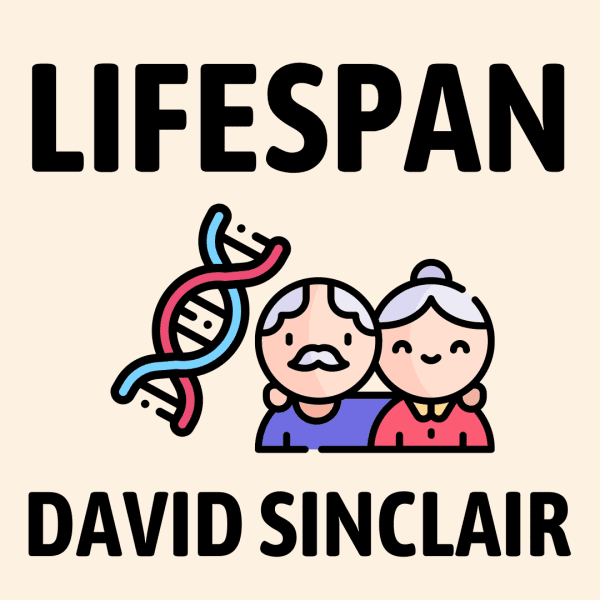










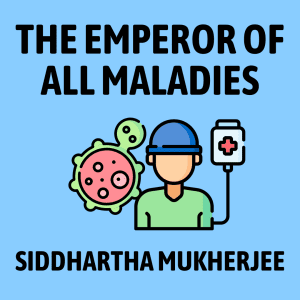
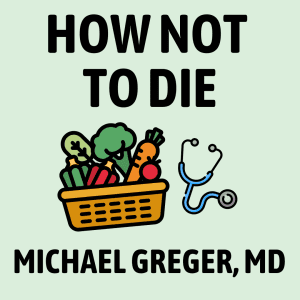

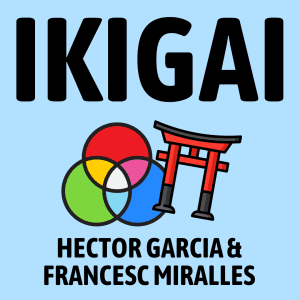
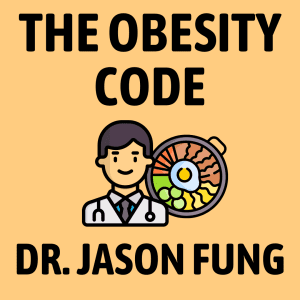
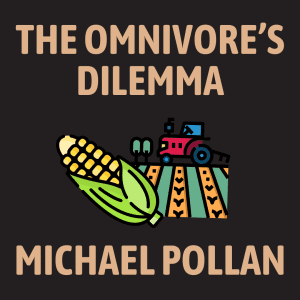
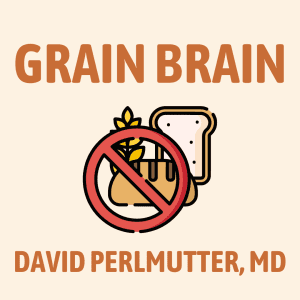
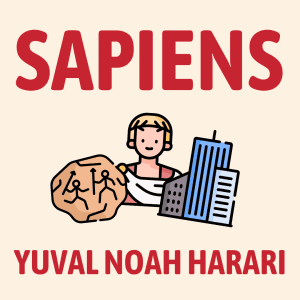
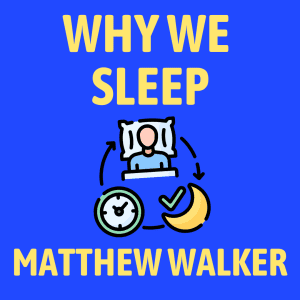
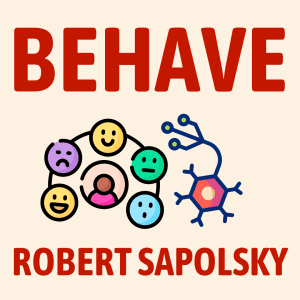


Community Notes